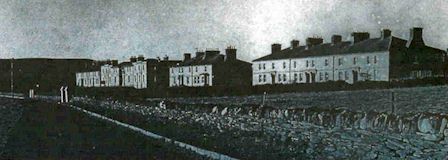The discoveries of electricity in the latter half of the 18th Century, and its close connection with magnetism, were the products of earlier experiments, which in turn led to the invention of the electric telegraph. Telegraphy had connected the interior of the United States, and it also connected Europe together. However, connecting the Americas and Europe proved to be a challenge. Due to the electric current that ran through the cable lines, insulation and waterproofing was necessary. The discovery of gutta percha, a gum like substance proved to be a satisfactory waterproof insulator.
In the 1850´s a number of attempts were made to lay a cable between Ireland and Newfoundland. In 1864 two investors put up the capital and the Great Eastern was offered to Cyrus Field to lay a cable. The Great Eastern was five times larger than any vessel afloat at the time. She was able to carry the entire new cable, which weighed 7,000 tons. The 2,600 miles of cable could be lowered in a continuous line from Ireland to Newfoundland. In June 1865 the Great Eastern arrived at Valentia and began laying the cable. Within 600 miles of Newfoundland the cable snapped and sank. The Great Eastern, after making several attempts to recover the cable without success, returned to Ireland.
A new company, the Anglo American Telegraph Co. raised £600,000 to make another attempt at laying the cable. The Great Eastern was overhauled, and in June 1866 the ship left Valentia, Ireland and sailed for Trinity Bay without mishap. The cable arrived at Heart's Content, (corresponding IEEE Milestone) on 27 July 1866. Europe and the Americas had finally been connected. The Great Eastern was also able to recover the 1865 cable, and two Atlantic cables were working.



